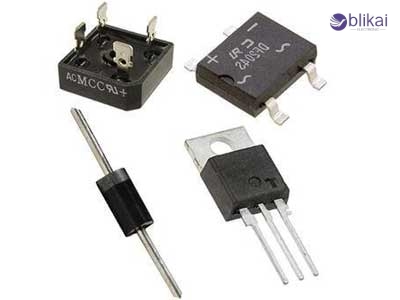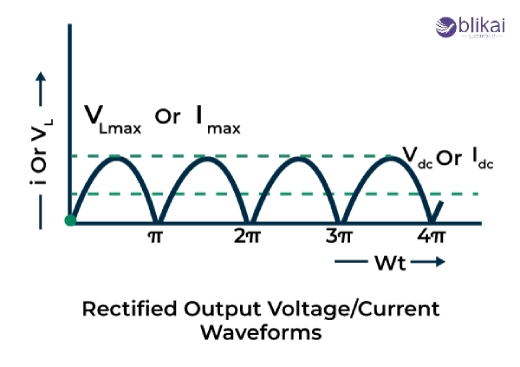What Does a Rectifier Do? What You Need to Know
Introduction to Rectifiers
The rectifier is an essential element in electrical or electronic systems, where it rectifies the incoming AC into something usable for the system while operating with the necessary rectified DC. It performs the basic but essential work of converting AC into DC since the supplied electric supply from the power lines would typically allow wires to allow AC only. In contrast, more electronic devices and appliances need DC for their operations.

How Does a Rectifier Work?
Basic Principles of Rectification
The primary function of rectifiers is to convert one form of electric current into some other, for example, from AC to DC. Rectification, as it is called, is a process necessary for many uses in electronics. One has to allow a specific conduction of the electric current only in one direction, and the reverse flow of the alternating waveform is almost blocked.
The Rectification Process
The steps that are there for the complete conversion of AC to DC are innumerable, but oversimplified can be thought of in two stages. The first stage is the conversion of the AC voltage into a specific higher inverter voltage, and then is used the diode or a series of diodes to realize the process. Diodes allow the current to pass only in one direction and block it the other way.
Half-Wave vs. Full-Wave Rectification
The two ways of rectification are half-wave and full-wave. In the case of half-wave, only one-half of the AC cycle is accepted so that input leads to pulsating DC output. In the case of full-wave, both halves of the AC cycle are accepted, which leads to smoother DC output with less ripple.

Smoothing the Output
While smoothing the output, circuits after rectification still have considerable ripple. Capacitors are easy to implement for these purposes. They work by storing energy during the peak of the voltage and releasing it during the drop in voltage, which allows the average DC voltage level to be less variable.
Types of Rectifiers
Half-Wave Rectifiers
Half-wave rectifiers are known for being the simplest type of rectifier circuit. They convert only one-half of the AC input, which appears positive. In this specific type of configuration, only the positive or negative half can be passed while the other half is cut off. This results in lower efficiency for electric power conversion. This type is best for low-power consumption instances where simple devices are needed.
Full-Wave Rectifiers
Unlike the above, full-wave rectifiers are more efficient than their half-wave counterparts. This type is able to output rectified signals, converting both halves of the AC input waveform into DC output. There are two main types of full-wave rectifiers.
Center-Tapped Transformer Rectifier
The two-diode full-wave rectifier, with the center-tapped transformer for rectification of both halves of the AC cycle, is a much better option in terms of a much smoothened DC output as well, when compared to its half-wave cousins and is used widely in medium power applications.
Bridge Rectifier
Bridge rectifiers are made up of four diodes, those being situated in a bridge configuration to convert AC to DC. They continue to be a top notch option and are a favorite of users in various electronic appliances.
Three-Phase Rectifiers
Large industrial machines and high-voltage systems usually use three-phase rectifiers. The use of the three-phase AC power allows the three-phase rectifiers, like other three-phase systems, to have a very smooth DC output and more efficiency than the single-phase rectifiers. Depending on the application requirements, these types of rectifiers may be either half-wave or full-wave.
Applications of Rectifiers
Power Supplies
Rectifiers play a key role in power supplies because they are one of the essential parts in the transformation of AC electricity from the wall outlets into DC, which is the power that electronic devices work on. Rectifiers are vital components in nearly all electronic equipment and household appliances, from computers and smartphones to tablets, television sets and power supply units to function. These rectifiers ensure the sensitivity that requires a stable flow of DC.
Battery Chargers
Beyond their role in charging batteries, rectifiers have other applications. When a charger connects a computer with itself, a rectifier in the charger gets AC electricity. It converts to the type of current that is appropriate for the device to be charged. It is an important step, enabling such rechargeable batteries fitted in the likes of smartwatches and electric vehicles to charge efficiently without overheating, which could otherwise hinder their overall performance over time.
Welding Equipment
In the industrial sector, the rectifiers applied to welding equipment are critical. Welding machines (arc welding) use rectifiers to change the AC power into the very high-current DC power that is necessary for the welding to be started and maintained. This is a perfect example of the rectifier being not only beneficial for consumer electronics but also for high-power applications.
Motor Speed Control
In industrial applications, rectifiers are integrated into motor speed control systems. With the conversion of AC power into DC, rectifiers can control the power’s voltage, enabling them to finely tune the speed at which motors spin in various machines and equipment used for manufacturing. This feature is essential for maximizing production and saving power in industrial work.
Key Components of a Rectifier Circuit
Diodes
The basic principle by which the rectifier circuit works is that a diode is a semiconductor device that allows current to flow in only one direction. At the same time, it turns off the current flow in the other direction. That is, diodes, in principle, convert AC into DC. While flowing through an AC on the rectifier, the diodes will mimic a one-way valve; hence, the positive or negative half-cycles of the AC will be allowed to continue.
Transformer
Several rectifier circuits that involve a transformer are used to rise or lower the input voltage to a level that is desired. Moreover, the transformer also produces an electrical separation between the input and output circuits, which is a measure of security and interference decline. Some uses are more straightforward to achieve with the help of center-tapped transformers like in the simple process of full-wave rectification.
Capacitors
Capacitors assist significantly with the maintenance of the rectified voltage. When the diodes turn AC into pulsating DC, capacitors collect power during voltage spikes and let it go while the voltage troughs occur. This action minimizes ripple and improves the level of stability of the DC output voltage. The particular type and size of capacitor used will change based on the specific parameters of the rectifier circuit.
Resistors
In rectifier circuits, resistors are frequently used to regulate voltage and current flow. They can be incorporated into a filter network or utilized for voltage division or current limitation. Resistors are sometimes used to provide feedback for voltage regulation or to balance loads.
Advantages and Disadvantages of Rectifiers
Advantages of Rectifiers
Converts AC to DC supplies many advantages for these electrical and electronic applications. It is essential because it allows many power supplies for various kinds of electronics. As a result, the lives of different electrical components will also be extended, and energy utilization will also be made more effective by this conversion process.
Voltage regulation is yet another significant benefit. Rectifiers can reliably power sensitive equipment because they can maintain a constant output voltage even when the input voltage varies. Furthermore, rectifiers are inexpensive and simple to keep in the majority of applications due to their straightforward design.
Disadvantages of Rectifiers
Despite their advantages, rectifiers have some drawbacks. One major disadvantage of them is harmonic distortion caused by the construction of the output waveform. To reduce this distortion, it may sometimes be necessary to employ additional filtering components which can create a problem for the quality of electrical power produced.
Another drawback is heat generation. The heat generated by the converting process could, if uncontrolled, affect the lifetime and effectiveness of the appliance. This may sometimes require irrigation systems, complicating the installation and increasing the expense further.
Maintenance and Troubleshooting
Regular Maintenance
Regular maintenance is the key to rectifiers' endurance and efficiency. This includes heat sink cleaning, routine checking of parts, and inspection for wear and tear. The maintenance schedule and the procedure as laid down by the manufacturer must be followed in the strictest sense.
Common Issues and Solutions
Rectifiers often face key issues over time, such as component failure, voltage swings, and overheating. To battle overheating, common interventions include replacing cooling fans or increasing barely adequate ventilation. When voltage fluctuations arise, it could be necessary to replace voltage regulators or adjust the input voltage. Component failure typically requires locating and replacing the offending element.
Troubleshooting Steps
While doing rectifier troubleshooting, a methodical approach is highly essential. First, inspect for any visible physical damage on the unit. Second, check both the input and output voltages with the aid of a multimeter. Should these volts fall standard, do component tests such as the capacitors and diodes. It's also essential to check for corrosion or connections that are not firmly secured.
Conclusion
Rectifiers are widely used in various electronic applications as they convert AC into DC. From simple household appliances to complex industrial machinery, rectifiers are responsible for providing stable power sources. Getting a clear insight about the different types of rectifiers, their parts and their top applications helps in picking the best one according to your needs.
Related Articles
2P4M Silicon Controlled Rectifier (SCR): Pinout and Application
Understanding Rectifiers: How Do They Convert AC to DC?
How Does a Single Phase Motor Work?
How does the Oscilloscope's X-Y Display Work ?
Exploring Varied Types of Inverters
Why Using Op Amps as Comparators?
What is Buffer Amplifier?
TXS0104EPWR Review: Features, Specification, and Applications
Cr2 vs Cr123: Which Battery Is Right for You? [Explained]
Buck vs Boost Converter: Everything You Need to Know
STM32F030F4P6 Microcontroller: Overview, Applications, and Datasheet
MC9S12XHZ256CAG Microcontroller: Overview, Specifications and Applications










